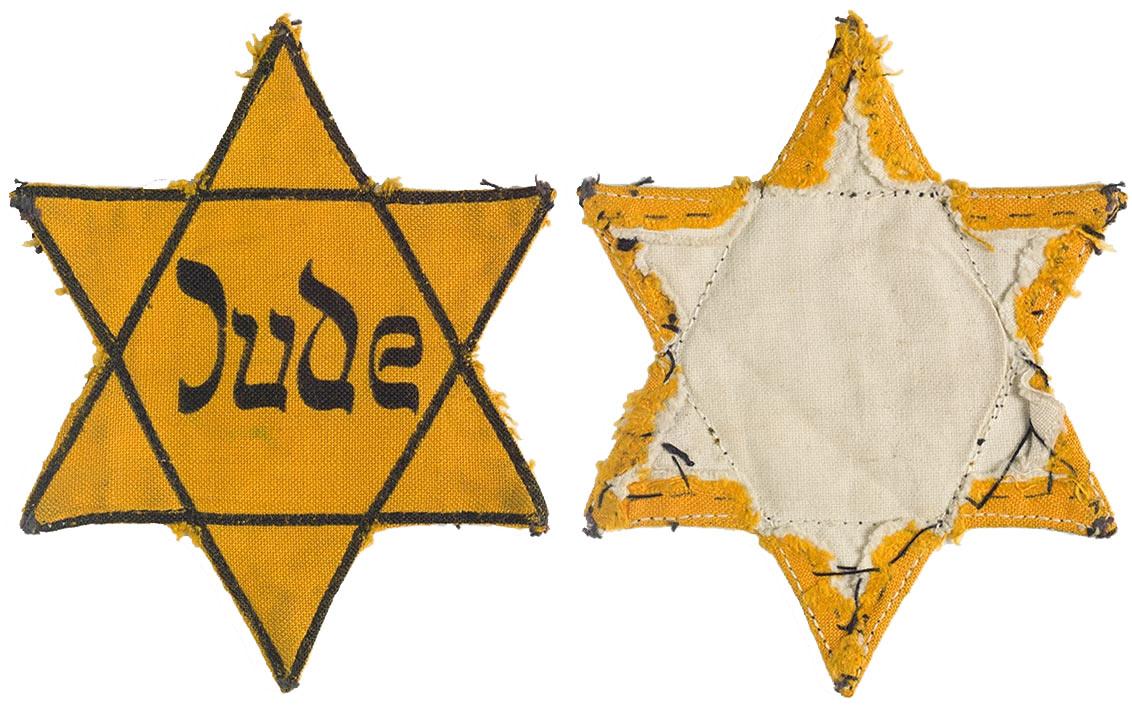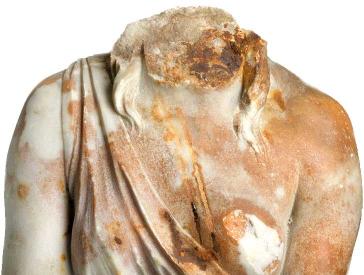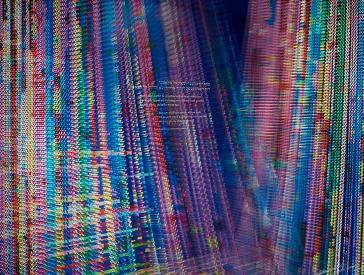Yellow Star
Unusual Objects in Showcase Tell Stories of Jewish Life

Yellow star of the Lehmann family, Berlin, 1941–1945; Jewish Museum Berlin, accession 2000/265/5, gift of Roselotte Winterfeldt, née Lehmann, photo: Roman März
Starting in September 1941, Jews in Germany were stigmatized by having to wear the Yellow Star. It had been introduced earlier in the territories occupied by Nazi Germany.
The star had to be visible on the upper left chest side of the clothing. The Gestapo forced the Jewish communities to sell the Yellow Stars—they cost 10 pfennigs each. Many of the extant stars show signs of wear.
The Nazis called the yellow star a “distinguishing sign.” It had the word “Jude,” or Jew, written on it in imitation of Hebrew letters.
From then on, walking down the street was like running a gauntlet. You felt trapped and observed. The result was increasing isolation from the rest of the population.
Further information about this object can be found in our online collections (in German).

Christoph Kreutzmüller, one of the curators of this exhibition, explains the laborious daily use of the yellow fabric star; audio track from our JMB app, photo: Andrea Fröhner
Read along: Interview with Christoph Kreutzmüller
Christoph Kreutzmüller, one of the curators of this exhibition, explains the laborious daily use of the yellow fabric star:
“The yellow stars were sold on behalf of the Gestapo by the Reich Association of Jews in Germany for the price of 10 Pfennigs. Those who were over six years old and had to wear this star could buy three stars – for 30 pfennigs – and then get another star on the clothing ration the year after. This means that they only had three or four stars altogether. As many people remember, and as we can see today, the stars are made of cheap, fragile, fibrous cloth. They were very often reinforced in order to give them some stiffness, and this stiffness also made it possible to sew these stars on then take them off again, because of course, if you only have three stars, but always had to wear one, you continuously have to take the star off and sew it on again.”
Core Exhibition: 13 Objects – 13 Stories (13)















